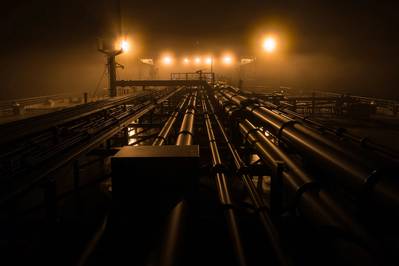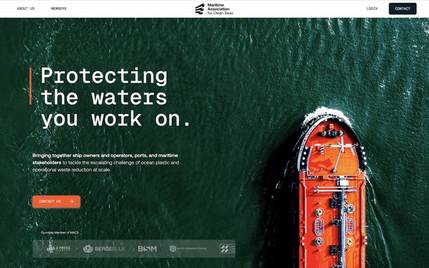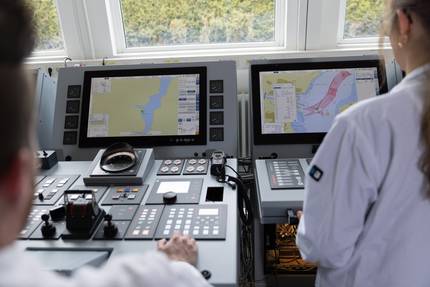Shadow and Dark Fleets: Increasing Size and Concerns
Global insurer Allianz Commercial recently issued its 2025 Safety & Shipping Review, examining maritime risk trends and losses. The report revealed that the shipping industry has made significant improvements when it comes to maritime safety in recent years. During the 1990s the global fleet was losing 200+ vessels a year. This total had halved 10 years ago and is now down to a record low of 27 as of the end of 2024 (from 35 in 2023).
Despite the ongoing trend for fewer large losses, challenges remain. Shipowners are trying to operate vessels safely within an ever-changing and dynamic regulatory framework and do the right thing while managing a host of complex issues. One such risk is the rise of the shadow fleet, comprised of mostly older, poorly maintained oil tankers, which has expanded rapidly, posing significant maritime safety and environmental risks.
Shadow Fleet Risks
In July 2024, the Singapore-flagged oil tanker Hafnia Nile collided with the dark fleet super tanker Ceres I off Malaysia’s east coast, causing both vessels to catch fire. The incident followed the detention of shadow fleet tanker Andromeda Star by Danish authorities in March 2024 after the 15-year-old vessel collided with the Bulgarian-flagged cargo ship Peace.
Shadow fleet or dark fleet tankers illegally trade oil subject to Western sanctions and embargoes. While the shadow fleet initially grew out of the illicit trade in Iranian and Venezuelan oil, it has increased significantly with the imposition of sanctions and the international price cap on Russian oil. Around 80% of Russia’s oil exports are now thought to be shipped on shadow tankers.
While definitions of shadow fleet vessels differ, they are typically older vessels (15+ years) that are poorly maintained and hold insufficient or no insurance. Sailing under flags of convenience, they take steps to obscure their true ownership and employ various risky tactics to avoid detection, such as switching off automatic identification systems (going dark) and the use of dangerous ship-to-ship transfers in international waters off Russia, Malaysia, Malta, Greece, South Korea, Oman and the UAE to name some of the major hotspots.
As a result, a significant proportion of the world tankers fleet is now operating outside Western jurisdiction, with minimal oversight and little or no insurance.
Since the start of the war in Ukraine, the size of the shadow fleet has exploded. Today, around 17% of the world tanker fleet is thought to belong to the shadow fleet: S&P Global estimates that there are approximately 591 shadow fleet tankers trading Russian oil alone, while the Kyiv School of Economics puts the number at around 435. The Centre for Research on Energy and Clean Air (CREA) reckons that an average of three shadow tankers leave Russian ports daily.
According to CREA, 72% of shadow tankers are over 15 years old. It also estimates that the cleanup costs for an oil spill involving a shadow tanker could be as much as $1.6bn.
Although western efforts to tackle the growth in the shadow fleet have intensified with EU, UK and US sanctions packages and the targeting of companies that support the operations of unsafe oil tankers, efforts to contain the shadow fleet have so far fallen short, although in March 2025 it was reported that the US administration was considering a plan to stop and inspect Iranian oil tankers at sea under an international accord aimed at countering the spread of weapons of mass destruction.
In April 2025, the EU said that it had adopted new rules requiring vessels passing through its waters to provide insurance details, adding this would improve its ability to monitor “and if necessary investigate” vessels suspected of not having proper coverage. The rules apply to vessels over 300GT but there are exemptions. It followed this up by announcing a new raft of sanctions against Russia-linked shadow fleet vessels and propaganda outlets or vessels and entities involved in the sabotage of underwater cables, airports, or servers.
These vessels pose a serious risk to shipping and the environment, as shown by recent collisions and groundings involving shadow fleet vessels in Europe and Asia. Tougher sanction measures have been introduced, but it remains to be seen if they will control the issue going forward.
From a marine insurance standpoint, insurers continue to invest in tools and resources to ensure compliance with sanctions requirements. Dark fleet vessels on sanction lists are easily identified during due diligence, yet so-called grey fleet vessels are more concerning. These vessels have legal ownership and are registered with flag states, and there may not be clear signals that they are conducting illegal trade. That is the part of the shadow fleet that needs careful attention to avoid issues with sanctions. Insurers have processes in place, but it requires significant effort in terms of work and investment in tools and people to stay ahead.
Spy-ships and Dark Fleets put Merchant Vessels Under Scrutiny
Recent incidents involving vessels suspected of damaging critical undersea cables have heightened scrutiny on maritime activities. Damage is often accidental, mainly due to fishing and anchors. However, deliberate acts are suspected in regions such as the Baltic Sea, Red Sea and South China Sea, although attribution is challenging.
Undersea infrastructure is vital in today’s digital economy: 99% of the world’s data is transmitted through a global network of 450 subsea cable systems which extend over a distance of 1.5mn kilometers. An estimated $10trn in financial transactions rely on sub-sea cable networks each day, according to NATO and the International Cable Protection Committee (ICPC).
Damage to sub-sea cables is not uncommon: There are around 150-200 cases of faults or damage reported annually according to the ICPC. Most of these incidents are accidental, with approximately 70-80% attributed to commercial fishing activities and ship anchors, while the rest are mostly the result of equipment failure or natural hazards, such as storms and landslides.
A number of vessels have come under suspicion or have been detained for damaging cables, while others have been involved in transporting sanctioned cargoes of oil. With growing concern about shadow fleet vessels and espionage, we see merchant vessels potentially being used to carry out deliberate acts of damage and disruption to sub-sea cables.
It is becoming harder, not just for the authorities to address these problems, but also for unsuspecting shipowners caught up in such acts. Meanwhile, the recruitment process for seafarers of specific nationalities could undergo an overhaul creating further pressure on the existing seafarer shortage. If we come to a place where vessels are suspected of espionage or acting in the interests of states, it would have an impact on international shipping, which relies on trust and the principle of the free movement of trade.
 Captain Rahul Khanna is Global Head of Marine Risk Consulting at global insurer Allianz Commercial. A marine professional with 27 years of experience within the Shipping and Maritime industry, Captain Khanna served more than 14 years on board merchant ships in all ranks, including Master of large oil tankers trading worldwide
Captain Rahul Khanna is Global Head of Marine Risk Consulting at global insurer Allianz Commercial. A marine professional with 27 years of experience within the Shipping and Maritime industry, Captain Khanna served more than 14 years on board merchant ships in all ranks, including Master of large oil tankers trading worldwide















